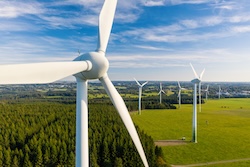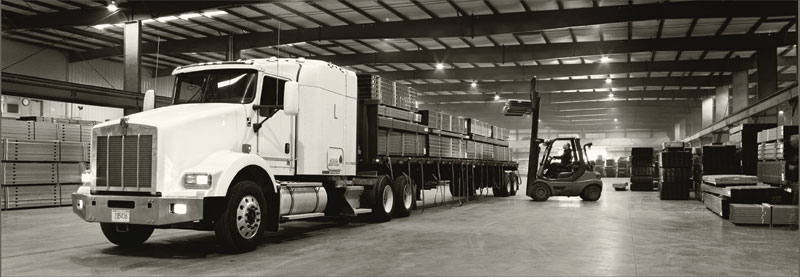The construction industry faces increasing pressure to reduce environmental impact while maintaining operational efficiency, driving interest in sustainable energy solutions. Among the tools available to builders and architects to achieve these heightened sustainability goals are Renewable Energy Certificates, which serve as the backbone of clean energy tracking and accountability across North America’s power grid systems. These certificates enable manufacturers to demonstrate environmental responsibility while supporting the broader expansion of renewable energy infrastructure.
For building product manufacturers specifically, understanding and leveraging RECs presents an opportunity to reduce carbon footprints, meet evolving sustainability requirements, and strengthen their position within an increasingly environmentally conscious supply chain.

What are RECs?
Renewable Energy Certificates (RECs) are a legal documentation of clean energy generated from renewable power sources like wind or solar. Per the United States Environmental Protection Agency (EPA), RECs are the accepted legal instrument through which to track and substantiate claims for renewable energy use in the U.S. and Canada power grid systems.
How do RECs Work?
When a renewable energy facility like a wind or solar farm produces one megawatt-hour of electricity, it also creates one REC. Those RECs can then be purchased by other parties (companies, manufacturers, or even individuals), which allows that party to claim the environmental benefits of the clean power generated.
To better understand this, it’s helpful to have a general understanding of how the U.S. and Canadian electric power grids work. All electricity produced—whether from a wind farm or coal-burning plant—is added to the grid, where it is combined with electricity from other sources. Because everything is mixed, there is no way to distinguish the exact origin of the electricity a manufacturer has used. This is where RECs come in. RECs serve as official documentation that a manufacturer is responsible for introducing a certain amount of renewable energy to the grid, and they allow that manufacturer to say their electricity came from a renewable source.
As mentioned, RECs are the only way to track and account for renewable energy use through the grid. Even if a manufacturer produces its own renewable energy onsite, RECs are still involved.
Why RECs are Important
As the only accepted way to track and account for renewable energy use, RECs build demand for more clean energy on the grid.
For the building products industry specifically, RECs are an important asset to the entire supply chain. For example, RECs empower manufacturers to choose renewable energy, reducing their own carbon footprint and supporting the further generation of clean energy. This subsequently benefits architects and specifiers who prefer to work with sustainability-minded manufacturers, general contractors who are looking to deliver ESG-friendly projects, and building developers or owners who are looking to reduce their Scope 3 emissions and meet their own ESG targets.
How ClarkDietrich Uses RECs
As part of our commitment to sustainability and reducing our environmental impact, ClarkDietrich purchased Green-e® Certified RECs to match 100% of our Scope 2 market-based emissions for 2024. This meaningful step enabled us to report a near-70% reduction in our total Scope 1 and Scope 2 emissions from 2023 to 2024.
It was important to us to source RECs with a credible, third-party verification. Green-e® has been a leader in clean energy certification for decades and is recommended or required in leading environmental standards, including LEED. Our RECs include 100% wind energy, traceable to Bent Tree Wind Farm in Hartland, Minnesota.
RECs are a practical and immediate step to reducing the emissions associated with our electricity use and serve as a stepping stone toward our bolder vision of onsite renewable energy and long-term energy efficiency upgrades.
Building a Greener Future with RECs and Industry Collaboration
The path toward a more sustainable construction industry requires collective action from manufacturers, architects, contractors, and building owners alike. While RECs represent just one component of a comprehensive sustainability strategy, they offer an immediate and verifiable way for building product manufacturers to reduce their environmental impact and contribute to the expansion of renewable energy infrastructure. As environmental standards continue to evolve and stakeholders increasingly prioritize sustainability in their decision-making processes, manufacturers who proactively embrace tools like RECs position themselves as forward-thinking partners in the industry’s transformation.
When evaluating suppliers and partners for your next project, consider prioritizing those who have made measurable commitments to renewable energy through RECs or other sustainability initiatives—these partnerships not only support your own environmental goals but also drive meaningful change across the entire construction supply chain.
New to any other sustainability terms used in this blog? Check out our new Sustainability Glossary for a comprehensive guide on key terms and concepts.
